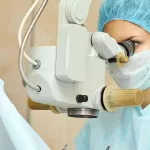
Importance of Regular Eye Exams and Early Detection of Eye Diseases
In Nepal, eye diseases are a significant public health issue that affects a large number of people. According to the Nepal Blindness Survey, approximately 1.8 million Nepalese people suffer from some form of visual impairment, and around 90% of blindness is preventable or treatable. Regular eye exams and early detection of eye diseases play a crucial role in preventing vision loss and improving overall eye health.
Importance of Regular Eye Exams:
1. Regular eye exams can help identify eye problems before they become more severe and prevent vision loss.
2. During an eye exam, an eye doctor can check for eye diseases such as cataracts, glaucoma, diabetic retinopathy, and macular degeneration, which often have no symptoms in their early stages, making regular eye exams even more critical.
3. In addition, eye exams can also detect the effect of systemic disorders such as high blood pressure, diabetes, and autoimmune diseases in the eyes.
Early Detection of Eye Diseases:
1. Early detection of eye diseases is crucial for preventing vision loss and improving treatment outcomes.
2. Early detected disorders, are often more treatable, that can be prevent or minimize vision loss. For example, cataracts are the leading cause of blindness in Nepal, but if detected early, they can be treated with surgery. Similarly, glaucoma can be managed with medication and surgery if detected early.
- Unfortunately, many people in Nepal do not have access to regular eye exams or are not aware of the importance of early detection.
- According to the Nepal Blindness Survey, only 28% of adults over 50 years old have had an eye exam in the last year.
- This lack of access to eye care services, combined with a lack of awareness, contributes to the high prevalence of preventable blindness in Nepal.
Ways to Increase Awareness and Access to Eye Care:
- Educating the public about the importance of regular eye exams and early detection of eye diseases through community outreach programs, schools, and media.
- Expanding access to eye care services in rural areas through mobile eye clinics and telemedicine.
- Making eye exams and treatment more affordable and accessible through government subsidies and partnerships with private healthcare providers.
- Encouraging regular eye exams as part of routine healthcare, particularly for high-risk groups such as people with diabetes and those over 50 years old.





